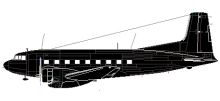Incident Overview

Description
Air Iceland flight 163, a Fokker 50, took off from Akureyri at 21:04. The flight was conducted under instrument flight rules, and the first officer was handling the aircraft controls. The climb, cruise, and initial descent were normal. The aircraft was flying a blind approach from the ?Skagi? radio beacon towards runway 20. Since the glide path indicator was inactive, the final approach was conducted using the localizer and distance measuring equipment (DME). The aircraft came out of the clouds at 1500 feet altitude, and the last few miles of the landing approach were guided by the runway?s Visual Approach Slope Indicator System (VASIS). The approach speed was normal according to the captain, but at around 500 feet, the aircraft was above the intended approach path. The first officer then pointed the aircraft?s nose down and reduced engine power to nearly idle. This caused the aircraft to descend rapidly. The first officer reduced the descent rate too late, leading to a hard landing on the runway, followed by the aircraft bouncing back into the air. The captain then intervened, landing the aircraft normally and taxiing it to the apron. Flight conditions were good, and weather is not considered to have contributed to the accident. The glide path indicator for the runway was inactive, but a safe approach should have been possible given the available equipment. The investigation into the accident revealed that the approach was not stable after descending below 500 feet, even though Icelandair’s operations manual specifies that the approach should be aborted if it is not stable. When the co-pilot reduced power at around 500 feet and pointed the aircraft?s nose down, the descent rate increased to as much as 1400 feet per minute, and the nose-down attitude was maintained until an altitude of 20 feet. The co-pilot then tried to reduce the descent rate by pitching the aircraft up, and it touched the runway with a +7ø nose-up attitude. The engines were almost at idle power, which caused significant drag from the propellers, increasing the descent rate. According to Icelandair’s standard procedures, the captain should have intervened and aborted the landing before the situation escalated. The flight recorder shows that the g-load during the landing was +3.17 G.
Primary Cause
Inadequate approach stability during descent below 500 feet due to an inactive glide path indicator and the first officer’s actions.Inadequate approach stability during descent below 500 feet due to an inactive glide path indicator and the first officer’s actions.Share on:





